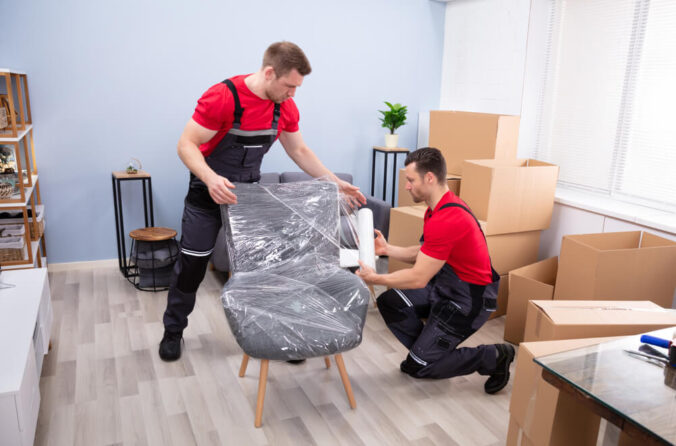Shipping a car to West Virginia involves several factors that influence the overall cost. Whether you’re relocating to the Mountain State or need to transport a vehicle for any other reason, understanding these key considerations is crucial for planning and budgeting effectively. In this comprehensive guide, we’ll explore the various factors that impact car shipping costs to West Virginia and provide valuable insights to help you navigate the process with confidence. As we delve into these considerations, we’ll also highlight how A-1 Auto Transport, a trusted industry leader, can assist you in shipping your vehicle to West Virginia seamlessly and affordably.
- Distance and Location
The distance your vehicle needs to travel is one of the primary factors influencing car shipping costs to West Virginia. If you’re shipping your car from a nearby state like Virginia or Pennsylvania, the shipping distance will be relatively short, resulting in lower transportation costs. However, if your vehicle is being transported from a distant location such as California or Florida, the longer distance will lead to higher shipping expenses.
Additionally, consider the specific location within West Virginia. Shipping your car to major cities like Charleston or Huntington may be more affordable due to greater accessibility and transportation infrastructure. Conversely, shipping to remote or rural areas may entail additional fees for extended travel distances or limited accessibility.
- Vehicle Type and Size
The type and size of your vehicle play a significant role in determining shipping costs. Larger vehicles, such as SUVs, trucks, or vans, require more space on the carrier and may incur higher shipping rates compared to compact cars or motorcycles. Additionally, oversized vehicles or those with modifications that exceed standard dimensions may require specialized transport arrangements, resulting in increased costs.
When obtaining a quote for car shipping to West Virginia with A-1 Auto Transport, provide accurate details about your vehicle, including its make, model, and dimensions. This information enables their team to determine the most suitable transport method and pricing based on your specific vehicle requirements.
- Shipping Method
The choice of shipping method also impacts car shipping costs to West Virginia. A-1 Auto Transport offers various shipping options, including:
- Open-Air Transport: This cost-effective method involves transporting your vehicle on an open-air carrier, exposing it to the elements during transit. While open-air transport is generally more affordable, it may not provide the same level of protection as enclosed transport.
- Enclosed Transport: Enclosed transport provides a higher level of security and protection for your vehicle by transporting it in a fully enclosed trailer. This method is ideal for classic cars, luxury vehicles, or high-value automobiles that require extra care and protection from weather conditions and road debris.
- Door-to-Door Delivery: With door-to-door delivery, your vehicle is picked up from your specified location and delivered directly to your desired destination in West Virginia. While convenient, this service may entail higher costs compared to terminal-to-terminal delivery options.
When selecting a shipping method with A-1 Auto Transport, consider your budget, the level of protection desired for your vehicle, and any specific delivery preferences to determine the most suitable option for your needs. For more details click here : https://www.a1autotransport.com/cost-to-ship-a-car-to-west-virginia/
- Seasonal Demand
Fluctuations in seasonal demand can impact car shipping costs to West Virginia. Peak moving seasons, typically during the summer months and around holidays, may result in higher demand for auto transport services, leading to increased prices. Conversely, booking your shipment during off-peak periods or avoiding peak travel times can help secure more competitive rates.
Plan your car shipment to West Virginia strategically, taking into account seasonal variations in demand and availability. By scheduling your transport during quieter periods, you can potentially save money and ensure smoother logistics for your vehicle’s delivery.
- Additional Services and Considerations
In addition to the factors mentioned above, several optional services and considerations may affect car shipping costs to West Virginia:
- Expedited Shipping: If you require faster delivery of your vehicle, expedited shipping services are available at an additional cost. This option prioritizes your shipment for quicker turnaround times, making it ideal for time-sensitive relocations or urgent transportation needs.
- Insurance Coverage: A-1 Auto Transport offers comprehensive insurance coverage to protect your vehicle against damage or loss during transit. While basic insurance coverage is included with every shipment, additional insurance options may be available for added peace of mind, depending on your vehicle’s value and your risk tolerance.
- Vehicle Preparation: Proper vehicle preparation is essential to ensure a smooth shipping process and minimize the risk of damage during transit. Follow A-1 Auto Transport’s guidelines for vehicle preparation, which may include removing personal belongings, securing loose parts, and documenting the vehicle’s condition before shipment.
- Terminal-to-Terminal vs. Door-to-Door Delivery: Consider the pros and cons of terminal-to-terminal and door-to-door delivery options when planning your car shipment to West Virginia. While terminal-to-terminal delivery may be more cost-effective, door-to-door delivery offers greater convenience and eliminates the need for additional transportation to and from terminal locations.
Vehicle Inspection and Documentation
Before shipping your vehicle to West Virginia with A-1 Auto Transport, it’s essential to conduct a thorough inspection and document its condition. Inspect the exterior and interior of the vehicle, noting any existing damage, scratches, or dents. Take photographs from multiple angles to capture any pre-existing conditions accurately.
Documenting the vehicle’s condition before shipment serves as essential evidence in case of any disputes or discrepancies upon delivery. Share the inspection report and photographs with A-1 Auto Transport to ensure that both parties have a clear understanding of the vehicle’s condition before transit.
Weather Considerations and Seasonal Precautions
West Virginia experiences diverse weather conditions throughout the year, ranging from hot summers to cold winters and occasional severe weather events. When planning your car shipment with A-1 Auto Transport, consider the potential impact of weather conditions on transit times and delivery schedules.
During the winter months, adverse weather such as snow and ice may affect road conditions and transportation routes, potentially leading to delays in delivery. Similarly, extreme heat during the summer can pose challenges for vehicle transport, particularly for enclosed carriers where temperature regulation is crucial.
Communicate with A-1 Auto Transport regarding any weather-related concerns or precautions to ensure that your vehicle is transported safely and securely, regardless of the prevailing weather conditions during transit. By staying informed and proactive, you can minimize the risk of weather-related disruptions and ensure a smooth shipping experience to West Virginia.
Specialized Vehicle Requirements
If your vehicle has unique specifications or requires special handling, it’s essential to communicate these requirements to A-1 Auto Transport when planning your shipment to West Virginia. Specialized vehicles such as classic cars, high-performance vehicles, or oversized vehicles may require customized transport solutions to ensure safe and secure transit.
Discuss any specialized vehicle requirements with https://www.a1autotransport.com/ shipping specialists, who can recommend the most suitable transport method and ensure that your vehicle’s unique needs are accommodated. Whether it’s arranging for enclosed transport for added protection or coordinating with specialized carriers for oversized vehicles, A-1 Auto Transport has the expertise and resources to handle a wide range of vehicle types and specifications.
Seasonal Considerations and Peak Demand Periods
Understanding seasonal demand patterns and peak periods can help you plan your car shipment to West Virginia more effectively and potentially save on transportation costs. While demand for auto transport services may fluctuate throughout the year, certain times, such as holidays or peak moving seasons, typically experience increased demand and higher shipping rates.
By scheduling your car shipment during off-peak periods or avoiding peak demand times, you may be able to secure more competitive rates and ensure smoother logistics for your vehicle’s delivery. A-1 Auto Transport’s shipping specialists can provide valuable insights into seasonal demand trends and assist you in planning your shipment accordingly to optimize cost savings and transportation efficiency.
Top of Form
Fuel Surcharge and Market Conditions
Car shipping costs can also be influenced by fuel surcharges and market conditions. Fluctuations in fuel prices can impact transportation costs, as fuel expenses are a significant component of the overall operating expenses for auto transport companies like A-1 Auto Transport. When fuel prices rise, carriers may impose fuel surcharges to offset these increased costs, leading to higher shipping rates.
Additionally, market conditions, such as supply and demand dynamics within the auto transport industry, can affect pricing. During periods of high demand or limited carrier availability, shipping rates may rise due to increased competition for transportation services. Conversely, during quieter periods or when carrier capacity exceeds demand, prices may be more competitive.
A-1 Auto Transport closely monitors fuel prices, market trends, and industry dynamics to provide competitive pricing and value-added services to customers shipping their vehicles to West Virginia. By leveraging their expertise and industry insights, you can navigate fuel surcharges and market conditions effectively to secure the best possible rates for your car shipment.
Customs and Regulatory Considerations for International Shipments
If you’re shipping a vehicle to West Virginia from an international location, additional customs and regulatory considerations may apply. A-1 Auto Transport specializes in international car shipping and can assist you in navigating the complexities of customs clearance, import regulations, and documentation requirements.
When shipping a vehicle internationally to West Virginia, ensure compliance with all relevant customs regulations and obtain any necessary permits or certificates required for importation. A-1 Auto Transport’s experienced team can provide guidance and support throughout the customs clearance process, ensuring smooth transit and timely delivery of your vehicle to its destination in West Virginia.
By considering these additional factors and working with a reputable auto transport company like A-1 Auto Transport, you can streamline the shipping process and ensure a hassle-free experience when transporting your vehicle to West Virginia, whether from within the United States or internationally.
Bottom of Form
Auto Transport with A-1 Auto Transport: Your Trusted Partner
When it comes to shipping your vehicle to West Virginia, A-1 Auto Transport is your trusted partner, offering reliable, efficient, and cost-effective auto transport services. With decades of experience in the industry, A-1 Auto Transport has established a reputation for excellence, providing personalized solutions to meet the diverse needs of customers across the country.
Comprehensive Range of Services
A-1 Auto Transport offers a comprehensive range of auto transport services tailored to your specific requirements:
- Door-to-Door Delivery: Enjoy the convenience of door-to-door delivery, where your vehicle is picked up from your location and delivered directly to your desired destination in West Virginia.
- Terminal-to-Terminal Delivery: Opt for terminal-to-terminal delivery for a more budget-friendly option, where you drop off and pick up your vehicle at designated terminal locations.
- Open-Air and Enclosed Transport: Choose between open-air transport for a cost-effective solution or enclosed transport for added protection against the elements and road debris.
- Expedited Shipping: If you need your vehicle delivered urgently, expedited shipping services are available to ensure faster turnaround times.
Transparent Pricing and Upfront Quotes
At A-1 Auto Transport, transparency is paramount. They provide upfront, no-obligation quotes based on your specific shipping needs, with no hidden fees or surprises along the way. By utilizing their user-friendly online quote calculator or consulting with their experienced shipping specialists, you can obtain accurate pricing information and make informed decisions about your auto transport needs.
Superior Customer Service and Support
With A-1 Auto Transport, you can expect superior customer service and support at every step of the process. Their knowledgeable and friendly team is available to answer any questions, address concerns, and provide guidance throughout your auto transport experience. From initial inquiry to final delivery, A-1 Auto Transport is committed to ensuring your satisfaction and peace of mind.
Cutting-Edge Technology and Tracking
A-1 Auto Transport utilizes cutting-edge technology and tracking systems to keep you informed about the status of your shipment in real-time. With their advanced tracking capabilities, you can monitor the progress of your vehicle as it makes its way to West Virginia, providing added reassurance and confidence in the shipping process.
Trusted Reputation and Reliability
Backed by a trusted reputation and a track record of reliability, A-1 Auto Transport is the preferred choice for customers seeking quality auto transport services. Their commitment to excellence, professionalism, and customer satisfaction has earned them accolades from satisfied customers across the country.
Conclusion
Calculating car shipping costs to West Virginia requires careful consideration of various factors, including distance, vehicle type, shipping method, seasonal demand, and additional services. By understanding these key considerations and working with a reputable auto transport company like A-1 Auto Transport, you can ensure a smooth and cost-effective shipping experience for your vehicle.
With A-1 Auto Transport’s expertise, reliability, and commitment to customer satisfaction, you can trust that your vehicle will be transported to West Virginia safely and efficiently. Contact A-1 Auto Transport today to request a quote and start planning your car shipment to the Mountain State with confidence.









